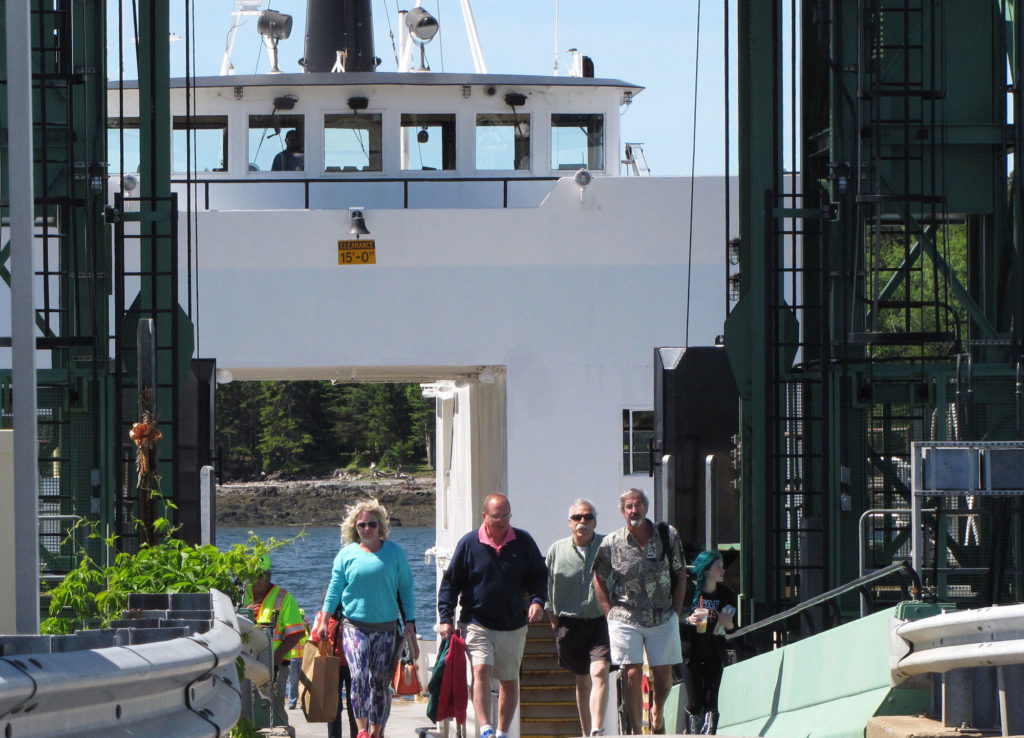Promoting quality tourism in Maine
Small businesses hear results from Maine tourism survey
It’s no secret that Maine’s coast and islands depend largely on two industries: the fishing economy and the tourism economy. With $4 billion in tourism spending along the coast, it’s hard to ignore the potential for businesses and communities. Are dollars being left on the table? Is the spending happening in my community, or in my business? What can we do to better attract the tourists and visitors who contribute the most—not just dollars—to our local economy?
These questions are regularly pondered by the Maine Office of Tourism, which strives to understand the dynamics of the industry and share its research with businesses and communities. Recently, they contracted with DestinationNEXT to assess the industry throughout the state and its regions. The work involved surveying members of the industry, businesses, local officials and citizens, and customers to help identify priorities and strategies for the future.
The results highlighted something that many in small, remote communities already know well: “The same activities that improve visitor experiences also support the quality of life for residents,” said Paul Ouimet, managing director, DestinationNEXT.
The survey identifies where a specific area, the state of Maine, or its tourism regions fall on two continuums: how strong is the destination brand, and how strong is the community engagement? Not surprising, building and maintaining a brand for the area as a destination takes consistent online presence and marketing. Equally unsurprising is the fact that Maine’s telecommunications infrastructure is far behind the rest of the country.
“Telecommunications and transportation infrastructure isn’t just a tourism issue; it’s about sustaining the whole community and whole region,” said Ouimet.
In addition, the survey identified a number of other weaknesses: A lack in regional collaborations to help ensure quality destination marketing, a poor hospitality culture among community and industry, and the need for developing financial models that provide funding certainty for destination management. From large cities and expansive regions to tiny villages, Ouimet has seen that destination promotion activities also drive economic development and stability.
A few areas where Maine is succeeding include efforts to extend shoulder seasons with events or festivals that bring together residents and visitors (i.e. the Eastport Pirate Festival). That event is also an example of clustering experiences, which is possible even in rural areas! The Festival kicks off with an “Invasion of Lubec,” connecting those two communities. Lubec is also part of a regional tourism effort to institutionalize the BikeMaine trail that physically connects additional Downeast areas. Also, many communities are creating or branding unique neighborhoods as destinations, with activities or improvements that also benefit the quality of life for residents.
Major Opportunity Trends
- Marketing and tourism activities have transitioned from focusing on attractions to creating experiences. Ouimet referenced Atlas Obscura for generating ideas. We’ve seen how photos and videos are transitioning to show unique and authentic experiences.
- There’s also been a transition from advertising to marketing. Most notably, videos are becoming more prolific, in part because of evidence that people recall video content four times better than photographs.
- Building and protecting a destination brand requires a consistent online presence, as well as improving hospitality culture. It’s a combination of attracting visitors and then delivering on what was promised. Destination and Tourism Master Plans can help communities or regions figure out where to focus improvement.
- Destination management organizations and industry members need to collaborate. Many are trying to figure out an effective business model. Funding has been and will likely continue to be from public sources. The Main Street Program and other similar programs are great ways to bring groups together on this work.
For Maine in particular, Ouimet recommended that efforts be focused on building acceptance for change. While seemingly easier said than done, many of the changes to improve the quality (not just quantity) of tourism are changes that most everyone would favor for their own quality of life. Maine millennials have a better perception of Maine than millennials living elsewhere have of their states, and this is something we can build upon. Other recommendations include continuing to be creative about limited resources, creating and using a vision for the future, and building on small successes—all to engage communities in strengthening the destination brand.
Resources for Businesses and Employees
- Read more about the DestinationNEXT findings: https://visitmaine.com/resources
- Stay up to date on Maine’s 5-year strategic planning: MOTPartners.com
- Take and share customer service training tool: http://www.mainetourismtraining.com/
Apply for microgrants:
- Microgrants for Entrepreneurship & Community Impact can cover training fees/travel or contribute to marketing and branding your business: https://www.islandinstitute.org/island-and-coastal-business-launchpad
- Marketing Partnership Program: https://visitmaine.com/mtmpp
What We Do
The Island Institute’s Small Business Team provides business and financial planning to help entrepreneurs navigate the complexities of starting and growing a business. For more information on our small business support services, feel free to contact Stephenie MacLagan.
Commercial Currents is an email and blog newsletter that shares buoyant stories from Maine’s island and coastal communities about economic stability and resilience. To find archived editions, go to islandinstitute.org/blog/economic.
If you would like to receive future editions, you can subscribe here.


